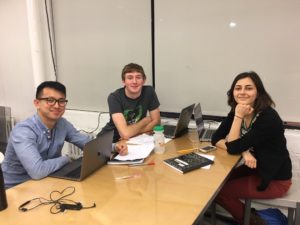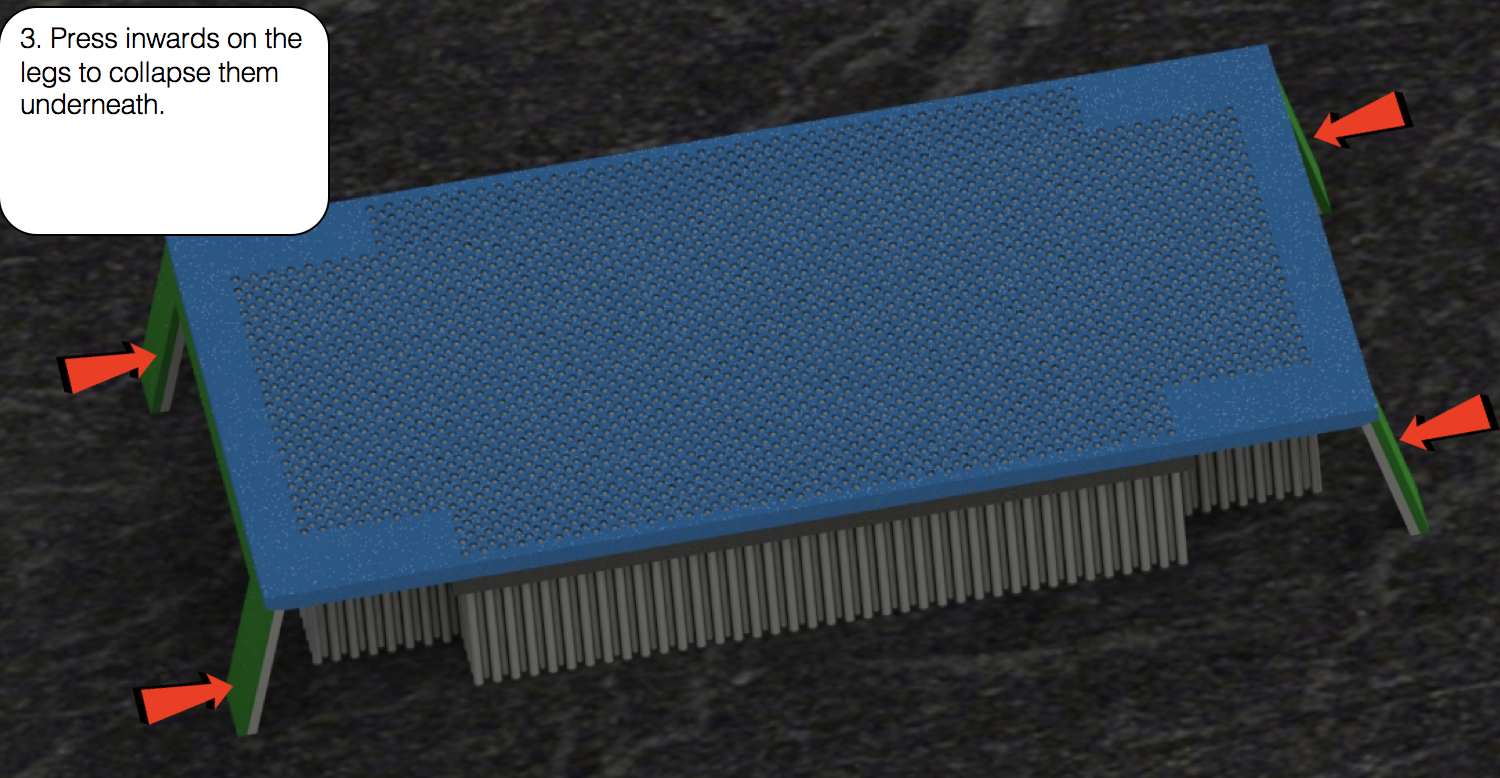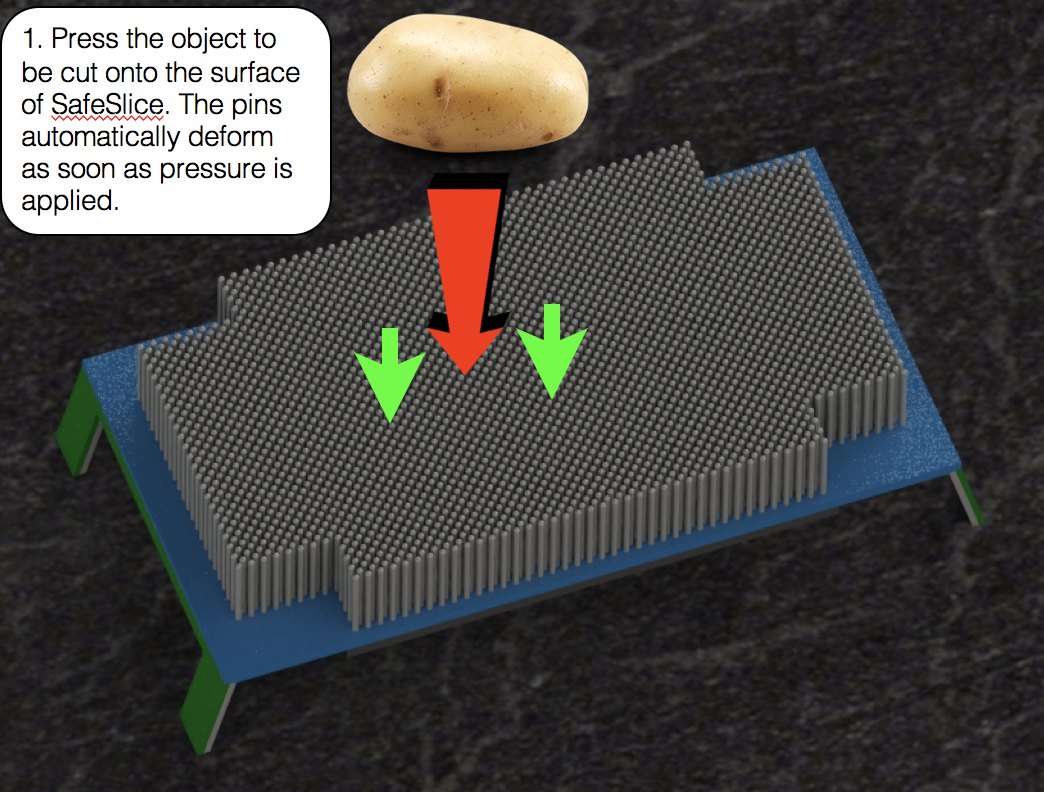- Team 4 – SafeSlice – Step 2
- Team 4 – SafeSlice – Step 3
- Team 4 – SafeSlice – Step 4
- Team 4 – SafeSlice – Step 5
- Team 4 – SafeSlice – Step 1

Team Members:
William Chan Le, Evan Brown, and Hannah M Hoffmann
The Redesign:
According to the National Institutes of Health, knives result in more emergency room visits in the U.S. than any other hand tool. Kitchen knives are particularly dangerous, commonly resulting in injury among children and the elderly. Given that food preparation is such an integral part of the lives of the aging population, a safer method of handling knives is essential to preventing dangerous and potentially debilitating injury.
SafeSlice returns autonomy back to much of the aging adult population. SafeSlice is a food prep aid that allows the user to easily and securely grip fruit, vegetables, or any other food that requires knife-work. SafeSlice is intuitive, easy to use, and removes all the common danger from food preparation. Simply place your food on SafeSlice, and lightly press down to deform the pins underneath the object. The rest of the pins remain upright and prevent the object from moving along the surface even if it is slippery. Since SafeSlice only requires vertical force, it is perfect for users with arthritis or that may struggle gripping objects securely. In addition, SafeSlice allows the user to position their hand further from the blade without compromising stability or control. SafeSlice removes much of the danger from knife work and it is particularly useful for adults with limited vision or mobility.
For many adults, getting older can mean losing the ability to safely cook your own food. With SafeSlice, it doesn’t have to be this way. This technology allows senior citizens to continue to prepare food in a way that is simple, secure, and safe.
How human-centered and human-factors concepts guided your team:
The Influence of human factor design concepts
The entire design of SafeSlice was closely informed by several human factors concepts. It was important to our team that we create a product that was intuitive, safe, and useful for our target population.
SafeSlice is intuitive. We wanted to create a product that was simple and easy enough to use. The average person should be able to use a SafeSlice with no instructions or training. To that end, we went through various iterations based on how we would use the product ourselves. We walked through the entire food preparation process in order to determine how a normal person would interact with the object and reconfigured the design to capitalize on our natural human tendencies.
SafeSlice is safe. Knife-work can be dangerous, particularly for the elderly population, so when we set out to redesigned the cutting board we made sure to prioritize safety in the product design. We asked ourselves questions such as “Where would a person place his or her free hand?” and “How can you reduce the risk of accidental cuts” which guided our final redesign.
SafeSlice is useful. While SafeSlice is a useful food preparation aid for all ages, we designed our product to specifically address the needs of the aging adult population. We considered the struggles and limitations of the elderly, such as limited mobility or vision, and created a problem that addressed these needs. For example, by relying on vertical pressure, SafeSlice can create a much tighter grip on food than an arthritic user may otherwise be able to generate.
By considering these aspects and incorporating elements and concepts from our course, we created a product that solves an important problem for today’s aging adult population.




